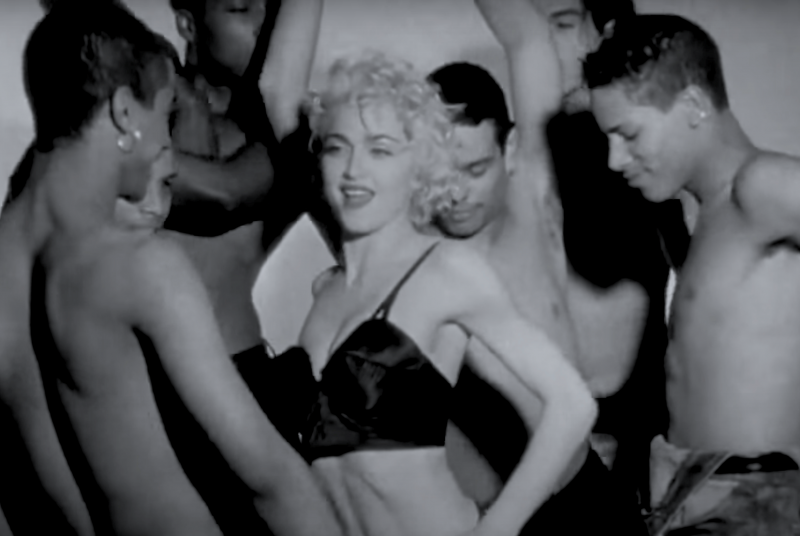Thirty years ago this month, Madonna: Truth or Dare was released to much fanfare. The documentary—part concert movie, part backstage exposé—captured the singer’s 1990 Blond Ambition world tour. It would be the highest grossing documentary of all time for the next 12 years.
Today, Truth or Dare stands as a feminist moment awkwardly sandwiched between its second and third waves. At the same time, the movie is probably most remembered for its strides toward gay visibility. The film presented Madonna’s touring crew as one big, (usually) happy family. And because all but one of her dancers were gay, same-sex relationships were presented in the film as just the same as everyone else’s. In 1991, in the midst of the AIDS crisis, the impact of that cannot be overstated.
It wasn’t just Madonna’s relationships with her dancers, either. At one genuinely vulnerable point, she is seen dedicating a concert to her friend Keith Haring, who had recently lost his life to AIDS-related complications. Later, we see her lunching with her friend Sandra Bernhard, as the two casually discuss the woman Bernhard is sleeping with.
As one of the biggest pop stars in the world at the time, Madonna’s example mattered. She knew it, and so did Alek Keshishian, her 26-year-old director. “I was in this bubble where that was just all accepted,” Keshishian told the New York Times in 2016. “I felt instinctively that I wanted to get across how in Madonna’s world, homosexuality was just a fact of life. These dancers, who she felt so close to, they were going through that age of AIDS. There was still so much stigma against it. I felt personally the power of putting that out, but I had no idea that it might resonate with others quite the way it did.”


